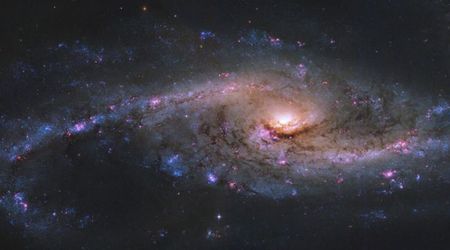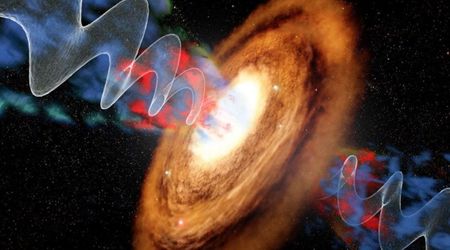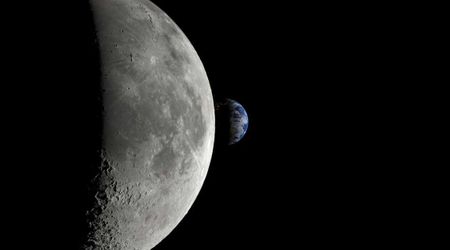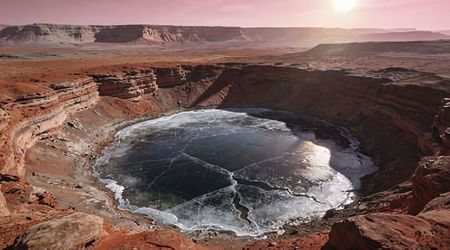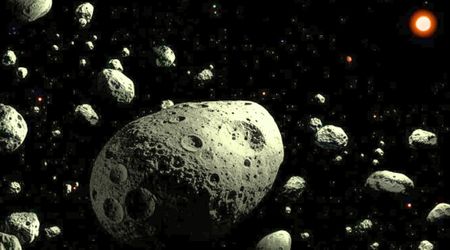How far is Earth from the Sun

How far away is the Sun now?
Last Updated: Today
On 2026-01-12, the distance between Sun and Earth is 147131386 kms, with a range-rate of 0.0830321 km/s, indicating that Sun is moving away from Earth at that moment.

Where does this live distance data come from?
I source Sun's distance from Earth via the Horizon JPL API. It is a free service provided by NASA's Jet Propulsion Laboratory (JPL) that offers access to ephemeris (positional) data and related information for celestial bodies, such as planets, asteroids, and comets. The system can be accessed through various interfaces, including a web interface, a telnet interface, and an email interface. This API contains the precise distance between the Sun and Earth for each day of the next few hundred years. So I simply created a system to check for today's date, then go retrieve the accurate distance value directly from NASA's database. The up-to-date value is then displayed on this page.

How do scientists calculate the real-time distance between the Sun and Earth?
Scientists calculate the live distance between the Sun and Earth using a combination of mathematics, astronomical data, and the principles of celestial mechanics. The positions of Earth and Neptune in their respective orbits are constantly changing due to their elliptical orbits and different orbital periods around the Sun.
Earth's orbital parameters
Orbital parameters describe the way objects move around in space, such as planets, moons, and satellites. These parameters include the size, shape, and tilt of the orbit, as well as the object's position and speed within the orbit. They help scientists understand and predict the paths of celestial bodies, which is crucial for planning space missions, observing astronomical phenomena, and monitoring satellites.
| Parameter | Value | Definition |
|---|---|---|
| Semimajor axis (106 km) | 149.598 | The longest radius of an elliptic orbit, or, in other words, the distance from the center of the object in the center of the orbit to the outer edge. |
| Sidereal orbit period (days) | 365.256 | The time it takes for an object to complete one orbit around another object, relative to the stars. |
| Tropical orbit period (days) | 365.242 | The time it takes for an object to return to the same position relative to the Sun, also known as the solar year. |
| Perihelion (106 km) | 147.095 | The point in the orbit of a planet where it is closest to its orbital focus, typically the Sun. |
| Aphelion (106 km) | 152.100 | The point in the orbit of a planet where it is furthest from its orbital focus, typically the Sun. |
| Mean orbital velocity (km/s) | 29.78 | The average speed at which an object orbits around the central body. |
| Max. orbital velocity (km/s) | 30.29 | The highest speed at which an object orbits around the central body. |
| Min. orbital velocity (km/s) | 29.29 | The lowest speed at which an object orbits around the central body. |
| Orbit inclination (deg) | 0.000 | The tilt of an object's orbit around a celestial body. |
| Orbit eccentricity | 0.0167 | The measure of how much an orbit deviates from being circular. An orbit with an eccentricity of 0 is a circle, whereas an eccentricity close to 1 is a highly elliptical orbit. |
| Sidereal rotation period (hrs) | 23.9345 | The time it takes for an object to make a complete rotation on its axis relative to the stars. |
| Length of day (hrs) | 24.0000 | The time for a planet to rotate on its axis so that the Sun appears in the same position in the sky, also known as a solar day. |
| Obliquity to orbit (deg) | 23.44 | The angle between an object's rotational axis and its orbital axis, or, equivalently, the angle between its equatorial plane and orbital plane. |
| Inclination of equator (deg) | 23.44 | The tilt or inclination of a planet's equator in relation to its orbital plane. It's also the angle between the plane of the planet's equator and the plane of its orbit around the Sun. |

Just for fun, how long would it take to reach the Sun via different transportation means
The average distance between Earth and the Sun is 93 million miles (150 million kilometers), so based on that distance, I have calculated the time it would take to reach our local star at the speed of different means of transportation.
- On foot (3 mph): approximately 3,538 years
- Bicycle (15 mph): approximately 707 years
- Horse (galloping at 25 mph): approximately 424 years
- Motorbike (average speed of 70 mph): approximately 151 years
- Boat (cruising speed of 23 mph): approximately 461 years
- Car (60 mph): approximately 176 years
- High-speed train (200 mph): approximately 53 years
- Commercial Airplane (575 mph): approximately 18.4 years
- Concorde supersonic jet (1,350 mph): approximately 7.8 years
- SpaceX Starship (projected average speed of 16,777 mph): approximately 0.6 years
Please note this is only for fun and it does not reflect the reality of space travel. This is a simplification and does not account for acceleration, deceleration, or the gravitational influences of celestial bodies, which would play significant roles in actual space travel. Also, these calculations assume constant speed, which is not how actual space travel works. A real trip to the Sun would be faster due to the spacecraft picking up speed from gravitational assists.
Bonus Fact: It takes 8 minutes for light from the Sun to reach Earth.

How far away are the other planets of the solar system?
I have developed a webpage that monitors the real-time distances between Earth and each planet of the solar system:
- Real-time distance between the Moon and Earth
- Real-time distance between Mercury and Earth
- Real-time distance between Venus and Earth
- Real-time distance between Mars and Earth
- Real-time distance between Jupiter and Earth
- Real-time distance between Saturn and Earth
- Real-time distance between Uranus and Earth
- Real-time distance between Neptune and Earth
